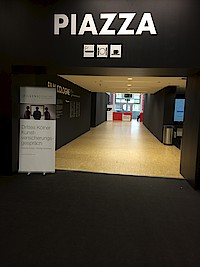Klicken Sie hier, um zu unserer deutschen Version zu gelangen.

The 3rd Cologne Art Insurance Talk 2014 in retrospect.
Wrong Art - Properly Insured
2012/2013 are years of public uncertainty in the art trade. In New York, the renowned Knödler Gallery closes down because apparently fake works were sold as genuine for years. In Germany, the Beltracchi case is widely reported. Leading auction houses, from Christies to Sotheby's, but also more locally oriented ones like Lempertz, have sold works by Max Ernst, Campendonck and Pechstein that, despite all the expert opinions, did not come from the oeuvre of these artists. Werner Spies - a renowned expert to whom we owe great exhibitions - was wrong several times in specifying works by Max Ernst. The fees for the error seem to be linked to the increase in value for the determination. The van Gogh Museum wrote off a painting by the master as not genuine 30 years ago and in 2013 the same institution comes to the opposite opinion on the same painting - it is genuine again!
2013 was one of the best years for the global art trade. Auction records were broken and the private trade also enjoyed great success at and alongside the major art fairs. Low interest rates are shifting the interests of capital investors to a sector whose determination of value is less transparent and promises significantly higher margins than any other commodity. Art has been forged, or copied, for centuries and in some cultural circles the copy is considered more valuable than the original.
Against this backdrop, a wealth of questions also arise for the insurance industry concerning the valuation of art, the significance of provenance, the power of experts and the powerlessness of the "house of 1,000 professions" (insurance industry).
What is the state of the industry's expertise? Is the issuing of an insurance policy on a high value a guarantee to a buyer that it is a genuine work and will the insurer pay even if it turns out afterwards that it was, at best, a copy and not a forgery? What does an insurer need to know in order to assess a risk? How safe is the use of experts? We want to explore these and many other questions at the 3rd Cologne Art Insurance Talk chaired by Stefan Kobel.
Round 1 The market and its participants - What makes buyers confident about the authenticity of the works they wish to acquire? How can fairs help to protect against mistakes. Who is liable for what and to what extent?
2nd round The insurance industry - How is it positioned to deal with art and international markets? How far does its expertise extend? What damage scenarios are conceivable? Is an agreed insured value binding in every case? Are there new products that provide additional security? What is meant by title insurance?








